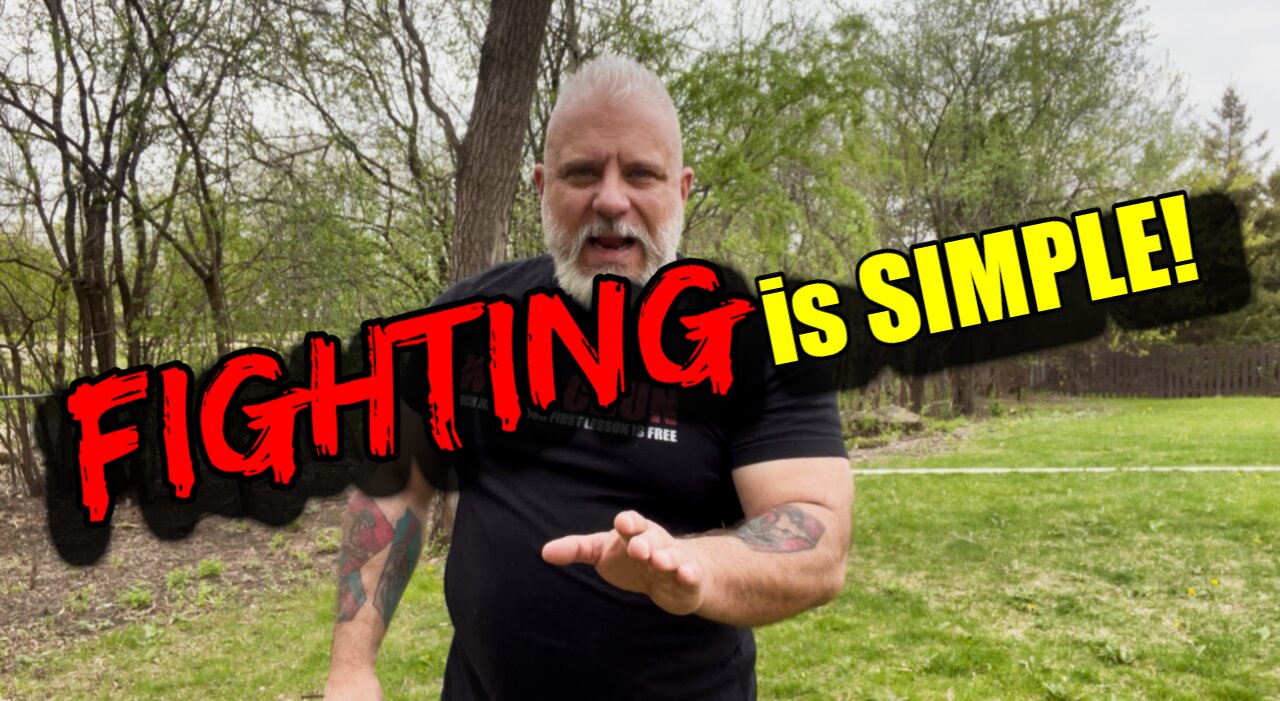Premium Only Content

Back to Basics: How Wing Chun Training Builds Real-World Self-Defense Skills
What separates theoretical talk from effective action in martial arts? For many, Wing Chun is a labyrinth of techniques, legends, and forums. But when fists fly, those who invested in basics and self-mastery walk away with real self-defense skills. This article uncovers why going back to basics is the true path to fighting ability in Wing Chun and what every casual reader can apply today.
1. The Nature of Real Fights: No Room for Theory
Ask any seasoned martial artist: fighting is rarely the satisfying, clean experience shown in movies. In reality, it’s chaotic, harsh, and often deeply regretful. It’s only after a real altercation—whether you win, lose, or witness the harm you can do—that you learn the importance of constant, honest self-examination .
Key Insight:
Online debates, forum drama, and style comparisons are distractions. The real enemy in a fight isn’t the opponent but your own lack of preparedness.
2. Padding, Contact—and How Real Application Happens
Styles like boxing and grappling are effective because you can train them at full intensity. The same cannot always be said for traditional martial arts without putting safety at serious risk. For Wing Chun, understanding where contact and controlled practice meet is crucial.
Contact or no contact: That’s the simplest real-fight division—not fancy terms like “kicking range” or “elbow range.”
Punching or grappling: Mastering both bridges is essential. Grappling removes the uncertainty of balance and is deeply linked to Wing Chun’s roots—even if many ignore this relationship.
3. Why Basics Are the Core of Real Martial Skill
Many practitioners jump ahead, craving advanced drills and tricks. True ability, however, is forged by obsessing over the core fundamentals. That’s where every ounce of power, timing, and body mechanics are perfected:
Hours—sometimes years—spent on the centerline punch, on stance, on weight transfer.
Training to feel every muscle: toes gripping the floor, hips driving the punch, the elbow supporting the hip.
Not pivoting but pistoning: making every motion direct, efficient, and supported by the entire body—not just the arms.
“My Wing Chun is better than most because I spent countless hours on just one thing—perfection of the basics. Only then did the real lessons reveal themselves.”
4. The Common Denominator: You
Every fight, every movement, every outcome returns to one variable—your own body and mindset. The difference is not size or speed, but the unity between intention, mechanics, and readiness.
If you’re exhausted—no advanced skill will save you.
If you can’t take or deliver a real hit—your training won’t translate.
If you can’t handle the unpredictability of grappling energy—you’ll lose control.
Tip: The common denominator is you, so make self-perfection your focus.
5. Step-by-Step: Perfecting the Legacy Basics
Think form is boring? Here’s what you’re missing by skipping the reps:
Key Wing Chun Drills for All Levels:
Centerline Punch (Yee Jee Kim Yeung Ma Stance):
Keep body relaxed but rooted; extension comes from the hip and elbow alignment.
Train in reps (10,000+!) with intense focus—every nerve engaged.
Visualize the “six points” on your centerline and develop equal power along the whole range.
Turning Punch:
Advance only when baseline punch is perfected.
Use hips, not shoulders, to convert energy.
Pro Tips:
Alternate forward/pull-back with each punch, focusing on the full-body chain.
Check posture, glute tension, and distance for every repetition.
6. The Untold Truth About Grappling in Wing Chun
Grappling is not a foreign element—it’s often where real fights end up. Learn to bridge from strike to control:
Use basic punches to close distance and enter grappling safely.
Your aim isn’t always to win by punches but to control situations—reduce risk, survive, and escape.
Reminder:
Anyone skilled at core Wing Chun principles can make themselves nearly impossible to take down, even by experienced wrestlers.
⚠️ Support the channel! https://www.paypal.com/paypalme/IzzoWingChun
⚡️ Join our Facebook Group Page! https://www.facebook.com/profile.php...
Wing Chun Kung Fu taught by Retired Police Officer and Tactics Expert, Dominick Izzo.
Dominick Izzo has been training Wrestling and Coaching since 1988 and training and teaching Wing Chun since 1996 and has been teaching. He was the first American Wing Chun instructor to be published and published in back to back issues in Wing Chun Illustrated.
He is world renown for his realistic, aggressive and combative approach to Wing Chun Kung Fu.
-
 3:49:59
3:49:59
Barry Cunningham
4 hours agoPAM BONDI & KRISTI NOEM HOST A PRESS CONFERENCE AND JOHN RICH JOINS THE SHOW!
11.3K6 -
 1:01:50
1:01:50
BonginoReport
3 hours agoSeason 2 Of The Epstein Show Just Dropped - Nightly Scroll w/ Hayley Caronia (Ep.126) - 09/03/2025
60K20 -
 1:01:42
1:01:42
The Nick DiPaolo Show Channel
4 hours agoUS Vaporizes Venezuelan Drug Boat | The Nick Di Paolo Show #1787
48.9K25 -
 1:09:48
1:09:48
Kim Iversen
3 hours agoEPSTEIN VICTIM: We Have The Names. We'll Make The List.
32.9K57 -
 LIVE
LIVE
The Jimmy Dore Show
2 hours agoTrump’s HUGE About-Face on the COVID Vaxx! Epstein Victims Demand Justice In DC! w/ Mary Holland
8,877 watching -
 DVR
DVR
The Mel K Show
1 hour agoLive Q&A With Mel K 9-3-25
6.58K1 -
 LIVE
LIVE
Quite Frankly
6 hours agoOccult Pop Culture & The Anne Heche Mystery | Christopher Knowles 9/3/25
608 watching -
 LIVE
LIVE
The Mike Schwartz Show
2 hours agoTHE MIKE SCHWARTZ SHOW Evening Edition 09-03-2025
4,312 watching -
 1:06:42
1:06:42
TheCrucible
3 hours agoThe Extravaganza! EP: 31 (9/03/25
79.8K5 -
 LIVE
LIVE
Wayne Allyn Root | WAR Zone
6 hours agoWAR Zone LIVE | 3 SEPTEMBER 2025
105 watching